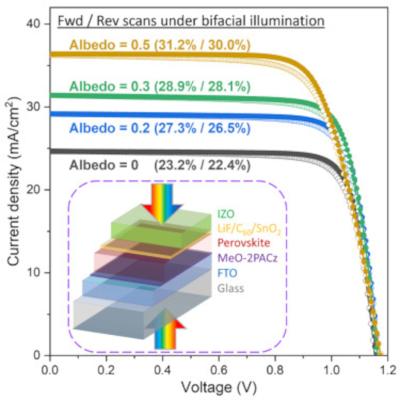A collaborative effort by researchers from the Centre for Hybrid and Organic Solar Energy (CHOSE), Department of Electronic Engineering at Tor Vergata University of Rome, Italy, the Department of Textile Engineering at the University of Guilan, Iran, GreatCell Solar Italia, Institute of Crystallography (IC-CNR), Italy, Department of Biological and Environmental Sciences and Technologies at the University of Salento, Italy and Institute of Nanotechnology (CNR NANOTEC), Italy, has resulted in the development of flexible perovskite solar cells with remarkable power conversion efficiencies (PCE) under white LED illumination.
The team achieved a maximum PCE of 28.9% at an illuminance of 200 lx and a record of 32.5% at 1000 lx, essentially converting a third of the incoming power (note that under 1 sun this figure for perovskite technology is less, i.e. one quarter).







